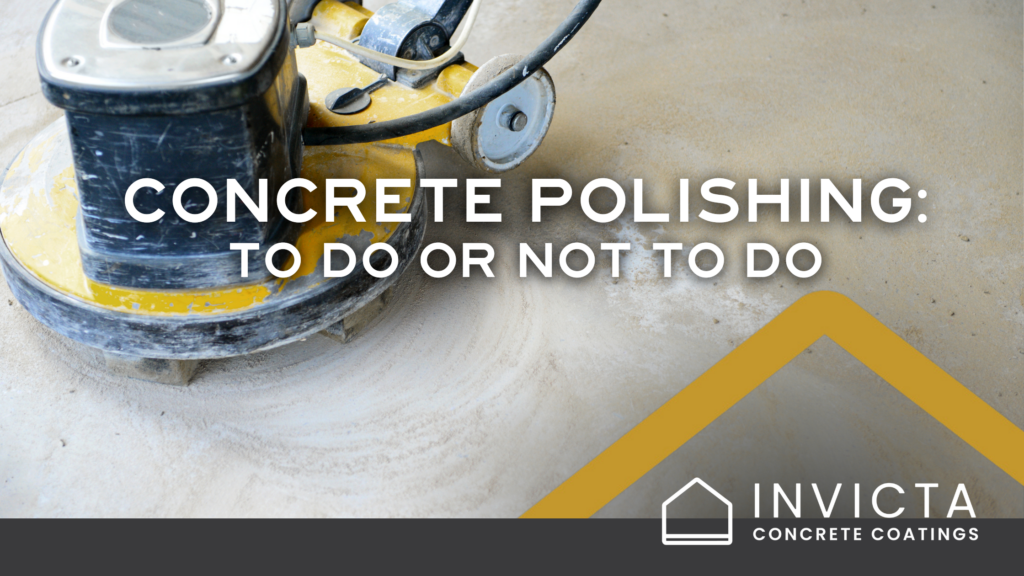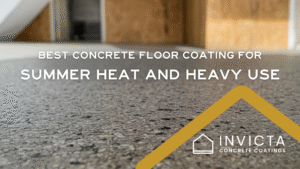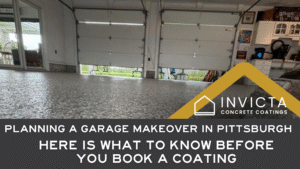Concrete polishing has become highly sought after by both residential and commercial property owners for achieving very sleek, long-lasting, and functional floors. Like with every investment, advantages and drawbacks must also be considered. Here’s a closer look at some points to consider before making the concrete polishing decision.
What is Concrete Polishing?
Concrete polishing is the process of grinding the surface of concrete to a glossy finish. Generally, the process starts off with coarse grit tools for removing imperfections on the surface and progressively finer grits to give a mirror-like shine. Many homeowners and businesses enjoy the industrial yet sophisticated look it provides, but concrete polishing isn’t just about appearances. In addition, this will add strength to the floor, making it quite an added investment for those high footfall or high-use areas.
Key Advantages of Polished Concrete
1. Long-Lasting Durability
Its strongest advantage is the durability of polished concrete. If applied correctly, polished concrete is able to withstand heavy traffic. It is therefore used well for retail stores, warehouses, garages, and other high-traffic locations. It does not scratch easily, impact easily, or even chemically damage if it is well-maintained. It lasts longer and often performs better than many other types of flooring options.
2. Low Maintenance Needs
Polished concrete requires very little maintenance compared to alternatives like wood, carpet, or vinyl. Its smooth surface resists dust and debris, making it easy to clean with a quick sweep or mop. Polished concrete also does not need to be waxed or coated regularly, unlike other surfaces that may require frequent refinishing. This feature is especially valuable for large spaces, as it saves both time and cost on maintenance.
3. Eco-Friendly Option
Opting for polished concrete is an eco-friendly choice as it typically uses the existing concrete slab in a building. This reduces the need for additional flooring materials and minimizes waste. Polished concrete also has a lower environmental footprint since it doesn’t involve the production and disposal of additional materials. Furthermore, concrete’s thermal properties allow it to absorb and retain heat, potentially reducing heating and cooling costs in buildings with radiant heating systems.
4. Enhanced Lighting
Polished concrete has a reflective surface that helps brighten up spaces by reflecting light. This effect not only adds to the aesthetics but can also reduce the need for artificial lighting. For businesses, this could lead to lower energy bills and a more inviting environment for employees and customers. In homes, especially in basements or garages, it can make the space feel more open and welcoming.
Potential Drawbacks of Concrete Polishing
1. High Initial Cost
While polished concrete is cost-effective in the long run, it does require a substantial upfront investment. The cost will vary depending on the size of the area, the level of polish desired, and any customizations like staining or scoring. However, this initial expense can be worth it for those who value durability and reduced long-term maintenance.
2. Time-Intensive Installation
Polishing concrete is not a quick process. The time required will depend on factors like the existing condition of the concrete, the level of shine desired, and any surface repairs needed. Preparation and polishing may take several days for larger spaces or areas with extensive damage. Therefore, it might not be ideal for those seeking a quick flooring solution.
When Should You Opt for Concrete Polishing?
Polished concrete floors work well for spaces where durability, low maintenance, and a modern aesthetic are priorities. They are particularly suitable for:
- Commercial and Industrial Spaces: The durability of polished concrete makes it a great fit for retail stores, warehouses, and other commercial spaces that experience a lot of foot traffic.
- Garages and Workshops: In residential settings, garages and workshops benefit from polished concrete’s resistance to stains and scratches.
- Basements: Homeowners often choose polished concrete for basements, as it provides a clean, low-maintenance solution that can help brighten up an otherwise dark space.
When to Consider Alternatives
For spaces that prioritize comfort and warmth, polished concrete might not be the best option. Living rooms, bedrooms, and other areas where people may prefer a softer or warmer feel underfoot could be better suited to carpet, wood, or other materials. Likewise, for areas with high moisture, such as bathrooms, the potential slipperiness and low insulation of polished concrete could present challenges.
Ready for Concrete Polishing?
Polished concrete is a smart, stylish, and highly durable flooring choice for spaces that demand both functionality and aesthetics. With benefits like low maintenance, eco-friendliness, and improved lighting, polished concrete can be the ideal solution for commercial, industrial, and even certain residential areas. Invicta Concrete Coatings specializes in delivering high-quality, professional concrete polishing services, ensuring floors that stand up to heavy use while looking sleek and sophisticated.
If you’re ready to elevate your space with the resilience and elegance of polished concrete, contact Invicta Concrete Coatings today. Our team will guide you through every step, from initial assessment to the flawless finish, transforming your floors into a durable, attractive foundation for years to come.




